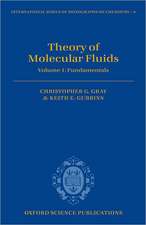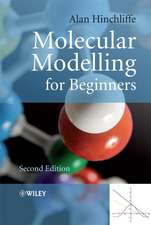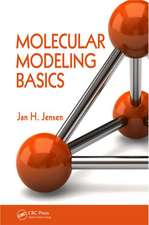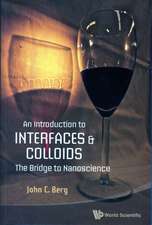Topics In Organic Polarography
Autor P. Zumanen Limba Engleză Paperback – 12 dec 2012
Preț: 406.80 lei
Nou
Puncte Express: 610
Preț estimativ în valută:
77.85€ • 80.82$ • 64.91£
77.85€ • 80.82$ • 64.91£
Carte tipărită la comandă
Livrare economică 22 martie-05 aprilie
Preluare comenzi: 021 569.72.76
Specificații
ISBN-13: 9781468418149
ISBN-10: 1468418149
Pagini: 544
Ilustrații: X, 530 p.
Dimensiuni: 170 x 244 x 29 mm
Greutate: 0.86 kg
Ediția:Softcover reprint of the original 1st ed. 1970
Editura: Springer Us
Colecția Springer
Locul publicării:New York, NY, United States
ISBN-10: 1468418149
Pagini: 544
Ilustrații: X, 530 p.
Dimensiuni: 170 x 244 x 29 mm
Greutate: 0.86 kg
Ediția:Softcover reprint of the original 1st ed. 1970
Editura: Springer Us
Colecția Springer
Locul publicării:New York, NY, United States
Public țintă
ResearchCuprins
I. Introduction.- II. Techniques Used in Elucidation of Organic Electrode Processes.- 1. Preparative Methods Used in the Elucidation of Organic Electrode Processes.- III. Polarographic Reduction of Some Carbonyl Compounds.- 2. Polarographie Reduction of Aldehydes and Ketones. I. General Reduction Scheme.- 3. Polarographic Reduction of Aldehydes and Ketones. II. pH-Dependence of Polarographic Limiting Currents of Aryl Alkyl Ketones Governed by the Rate of Simultaneous Reactions with Several Acids Producing the Electroactive Species.- 4. Polarographic Reduction of Aldehydes and Ketones. III. Effects of Alkyl Groups in the Side Chain of the Half-Wave Potentials of Deoxybenzoins and Some Other Alkyl Aryl Ketones.- 5. Polarographic Reduction of Aldehydes and Ketones. IV. Linear Free Energy Treatment of Substituted Benzonphenones.- 6. Desorption of 3-Phenylpropionaldehyde Preceding Polarographic Reduction.- 7. Direct Polarographic Determination of Pyridoxal in the Presence of Pyridoxal-5-Phosphate.- 8. Polarography of Steroids. III. Polarographic Reduction of Steroids Containing an Aldehydic Group in Position 18. (in German).- 9. Polarographic Behaviour of p-Diacetylbenzene; an Example of a Compound with two Electroactive Centres.- 10. Further Examples of para- and ortho- Disubstituted Benzene Derivatives Reduced in a Reversible Two-Electron Step into Products of Limited Stability.- IV. Polarographic Reduction and Some Reactions of ?-Substituted Carbonyl Compounds.- 11. Fission of Activated Carbon-Nitrogen and Carbon-Sulphur Bonds. II. Polarographic Reduction of ?-Amino Ketones.- 12. Fission of Activated Carbon-Nitrogen and Carbon-Sulphur Bonds. V. Polarographic Study of Elimination of ?-Morpholino Propiophenone.- 13. Fission of Activated Carbon-Nitrogen and Carbon-SulphurBonds. IX. Polarographic Study of Addition of Primary Amines to Phenyl Vinyl Ketone.- 14. Polarographic Reduction of Aldehydes and Ketones. V. Reduction Course of some ?-Ketosulphides and Effects of Alkyl Groups on Sulphur.- 15. Fission of Activated Carbon-Nitrogen and Carbon-Sulphur Bonds. VIII. Elimination of ?-Piperidinoethyl Phenyl Vinyl Sulphone with Hydroxyl Ions.- 16. Slowly Established Acid-Base Equilibrium in Organic Polarography: Tautometric Changes between 3-Thianaphthenone and 3-Hydroxy-Thianaphthene.- V. Polarographic Reduction and some Reactions of ?, ?-Unsaturated Carbonyl Compounds.- 17. Role of Keto-Enol Tautomerism in the Polarographic Reduction of some Carbonyl Compounds.- 18. Fission of Activated Carbon-Nitrogen and Carbon-Sulphur Bonds. VII. Kinetics of Ketol Formation from ?, ?-Un saturated Ketones in Alkaline Media.- 19. Polarographic Reduction of Cinnamaldehyde; Comparison with 3-Phenylpropionaldehyde and Phenylpropargylaldehyde.- 20. The Polarography of Steroids. I. Directly Reducible Ketosteroids. (in German).- VI. Reduction of the Activated C—N, C—S and C—O Bonds.- 21. Fission of Activated Carbon—Nitrogen and Carbon—Sulphur Bonds. Introductory Remarks.- 22. Fission of Activated Carbon-Nitrogen and Carbon-Sulphur Bonds. I. Polarographic Reduction of the Single C—N Bond.- 23. Fission of Activated Carbon-Nitrogen and Carbon-Sulphur Bonds. VI. Polarographic Reduction of the C—N(+) Bond in ?-Aminonitriles.- 24. Fission of Activated Carbon-Nitrogen and Carbon-Sulphur Bonds. III. Reduction of the C-S(+) Bond in Methyl Butyl Phenacyl Sulphonium Perchlorate.- 25. A New Type of Maximum on the Limiting Current of the Reduction Wave of Phenacyl Sulphonium Ions.- 26. Polarography of Pyridoxine and some of its Derivatives.- 27.Polarographic Reduction of 2-(2-Methyl-3-Hydroxy-5-Hydroxymethyl-4-Pyridyl) Thiazolidine-4-Carboxylic Acid.- 28. Fission of Activated Carbon-Nitrogen and Carbon-Sulphur Bonds. X. Polarographic Reduction of Substituted Methyl Phenyl Sulphones.- 29. Fission of Activated Carbon-Nitrogen and Carbon-Sulphur Bonds. XI. Polarographic Reduction of Substituted Benzenesulphonamides.- VII. Reductions of Azome thine (C=N?) Bond and their Application.- 30. Polarographic Behaviour of Acetone.- 31. The Reaction of Carbonyl Compounds with Primary Amines, (in German).- 32. Quantitative Treatment of Substituent Effects in Polarography. V. Polarographie Reduction of some Semicarbazones.- 33. Qxime Derivatives. VIII. Polarographic Reduction of O- and N- Substituted Oximes.- 34. Polarographic Study of the Reaction of Pyridoxal with Hydroxylamine.- VIII. Polarographic Reduction of Substituted Benzonitriles.- 35. Quantitative Treatment of Substituent Effects in Polarography. VI. Polarographie Reduction of Benzonitriles m- and p-Substituted with Electronegative Groups.- 36. Fission of Activated Carbon-Nitrogen and Carbon-Sulphur Bonds. XII. Polarographic Reduction of Substituted Benzonitriles Bearing in para- Position a Carbonyl Group in Acidic Media.- 37. The Use of Simple Molecular Orbital Theory to Elucidate the Polarographie Behaviour of some para-substituted Benzonitriles.- IX. Polarography of Nonbenzenoid Aromatic Substances.- 38. Polarography of some Aromatic Compounds: Sydnones and Azulenes. (in German).- 39. Polarography of Nonbenzenoid Aromatic and Related Substances. II. The Course of the Reduction of Sydnones at the Dropping Mercury Electrode.- 40. Polarography of Nonbenzenoid Aromatic and Related Substances. III. The Course of the Reduction of N,N-Polymethylene-bis-Sydnones.-41. Polarography of Nonbenzenoid Aromatic and Related Substances. IV. Polar Effects of Substituents in Phenylsydnones; The Application of Modified Hammett Equation.- 42. Polarography of Nonbenzenoid Aromatic and Related Substances. VII. A Polarographic Study of the Acid-Base Properties of the Tropylium Ion.- 43. Polarography of Nonbenzenoid Aromatic and Related Substances. VIII. Adsorption Processes during the Electroreduction of the Tropyliumlon.













